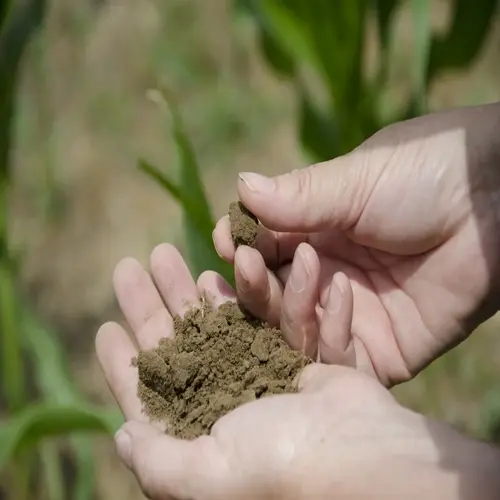Top 10 Heirloom Tomato Varieties for Your Garden

Written by
Nguyen Minh
Reviewed by
Prof. Samuel Fitzgerald, Ph.D.Heirloom tomato varieties preserve unique genetic diversity unavailable in commercial hybrids.
Brandywine and Cherokee Purple offer complex flavors perfect for fresh eating.
Green Zebra and Yellow Pear thrive in containers with minimal care.
Proper fermentation techniques maintain seed viability for 5-10 years.
Arkansas Traveler resists diseases and thrives in humid growing conditions.
Debunk myths: many heirlooms match hybrid yields with proper support.
Article Navigation
Heirloom tomato varieties embody history that has been handed down for over fifty years. These open-pollinated gems preserve unique genetic lines (mass-produced hybrid seeds do not). Their flavor is bursting with complexity that grocery store tomatoes cannot replicate. Rich, Brandywines with floral notes, or smoky Cherokee Purples are what they taste like.
This guide will offer you a selection of unique heirloom tomato varieties for all kinds of gardens and tastes. We're centered around wine, and most importantly, how to help you choose tomatoes that are perfect for your climate and for the dishes you want to cook with them. Every gardener should have the opportunity to enjoy these delicious gems, regardless of their gardening ability. Let's find your perfect gem.
Saving and Storing Seeds
Preserving seeds from your heirloom tomato varieties ensures future harvests have their flavor and genetic uniqueness intact. Storing seeds in this manner helps maintain the flavor-tasting notes that commercial heirlooms lose from generation to generation. Sensory flavors of your heirloom tomato varieties are better preserved using mostly fermentation methods than dry methods can protect them for far longer. Fermented seeds may even have higher germination rates while protecting the seed's sensory flavor profiles.
It is essential to distinguish fermentation from simple drying. Fermentation entails immersing seeds in water for three days and then rinsing them off. This process naturally leaches growth inhibitors that would prevent germination. In dry methods, soaking is omitted, which can lead to mold growth during storage. Fermented seeds reliably yield plants with the same outstanding flavor qualities as the original parent.
Store seeds at a temperature range of 32°F to 41°F (0°C to 5°C) for long-term viability. They are best stored in airtight containers with silica gel packs. It is advisable to maintain humidity levels below 40%. Freeze storage extends long-term viability to exceed ten years. It is always wise to label varieties with the date of harvest and the flavor characteristics of each.
Tomato Selection Criteria
- Ripeness Indicators: Choose tomatoes showing deep, uniform coloration and slight softness when gently pressed, avoiding any with disease spots or cracks
- Genetic Diversity: Harvest from at least five different plants of the same variety to maintain robust genetic traits in future crops
- Timing: Collect seeds during peak harvest season when plants show strongest growth characteristics and environmental stress is minimal
Fermentation Process
- Container Setup: Place seeds with gel in glass jars filled halfway with water (68°F/20°C), covering loosely with breathable cloth during 3-5 day fermentation
- Mold Development: Expect white surface mold indicating successful breakdown of germination inhibitors surrounding the seeds
- Rinsing Technique: Pour fermented mixture through fine mesh, rubbing seeds under running water until they feel completely smooth and residue-free
Drying and Storage
- Drying Conditions: Spread seeds in single layer on glass or ceramic at 40-50% humidity for 7-10 days until brittle when bent
- Container Options: Use airtight glass jars with silica packets or vacuum-sealed bags preventing moisture damage during long-term storage
- Viability Duration: Maintain seeds at consistent 40-50°F (4-10°C) temperatures for maximum 10-year viability without germination rate reduction
Seed Viability Testing
- Germination Check: Place 10 seeds between damp paper towels at 70-80°F (21-27°C) for 7 days to calculate viability percentage
- Acceptable Rates: Seeds with 70%+ germination remain suitable for planting; below 50% requires replacement
- Storage Impact: Test annually after 3 years as viability declines faster in fluctuating temperatures above 60°F (15°C)
Labeling System
- Essential Details: Record variety name, harvest date (month/year), and location grown for traceability
- Storage Labels: Use waterproof tags inside containers plus external labels with large visible text
- Digital Backup: Photograph seeds beside handwritten labels before storage as secondary reference
Heirloom Tomato Recipes
When you pair heirloom tomato varieties with complementary ingredients, their natural flavors are at their peak. Pair an acidic Green Zebra with a fat-rich avocado in a salad; sweet Brandywines with creamy burrata cheese; and a smoky Cherokee Purple with balsamic glaze, moving past the caprese salad (sorry!). The acidity level in each variety helps you determine which variety would go best with your ingredient.
Exact measurements will deliver reliable results when using these unique tomatoes. For sauce cooked for 90 minutes, use 2 cups (500g) diced Amish Paste tomatoes. For roasted, 1 pint (300g) of Yellow Pears roasted at 250°F (120°C) for 3 hours. You can modify timing based on size: if using large beefsteaks, add on 5 minutes of cooking time.
Developments in texture have an extreme impact on cooked recipes. Meaty paste tomatoes, such as Amish Paste, hold together perfectly in sauces. Juicy beefsteaks, such as Brandywine, break down much faster in soups. Cherry tomatoes, like Yellow Pear, enhance the flavor when roasted. Consider the varieties you will choose and the intended cooking consistency.
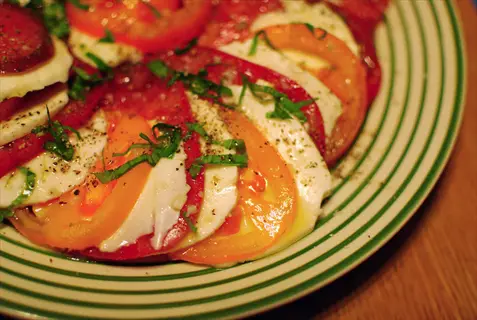
Brandywine Caprese Salad
- Preparation: Layer ½-inch (1.3cm) Brandywine slices with fresh mozzarella and basil, drizzle 2 tbsp (30mL) extra virgin olive oil, and sprinkle flaky sea salt
- Flavor Synergy: Low-acid Brandywine balances creamy mozzarella while basil adds aromatic contrast to the sweet tomato flesh
- Serving Tip: Serve immediately after assembly at 65-70°F (18-21°C) to preserve delicate texture and prevent weeping
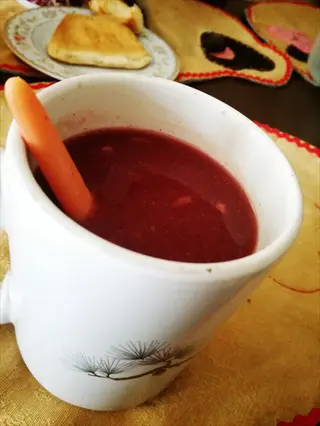
Cherokee Purple Gazpacho
- Preparation: Blend 2 lbs (900g) Cherokee Purple tomatoes with 1 cucumber, ½ red bell pepper, 2 garlic cloves, 3 tbsp (45mL) sherry vinegar, and ¼ cup (60mL) olive oil
- Texture Note: Cherokee Purple's dense flesh creates velvety texture without needing bread thickeners common in traditional gazpacho recipes
- Chilling Requirement: Refrigerate for minimum 4 hours to allow smoky-sweet flavors to fully develop before serving cold
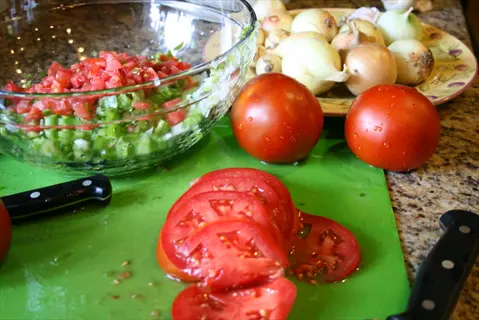
Green Zebra Salsa Verde
- Preparation: Dice 1 lb (450g) Green Zebra tomatoes, mix with ½ cup chopped cilantro, ¼ cup (35g) minced white onion, 2 diced jalapeños, and juice of 2 limes
- Acidity Balance: Green Zebra's tartness cuts through rich meats while lime juice prevents browning of the vibrant green flesh
- Usage Tip: Pair with grilled fish or chicken within 2 hours of preparation for optimal crispness and zesty flavor impact
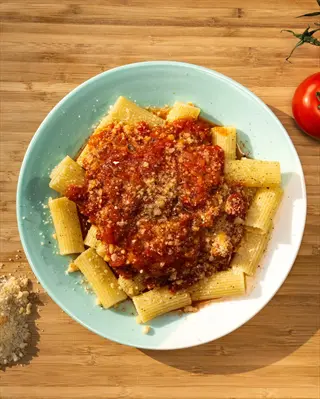
Amish Paste Tomato Sauce
- Preparation: Simmer 3 lbs (1.4kg) quartered Amish Paste tomatoes with 6 garlic cloves, ¼ cup (60mL) olive oil, and fresh basil for 90 minutes until thickened
- Consistency Advantage: Amish Paste's low moisture content reduces cooking time by 40% compared to standard tomatoes while yielding thicker sauce
- Preservation: Freeze in 1 cup (240mL) portions for year-round use, maintaining bright flavor without canning processing
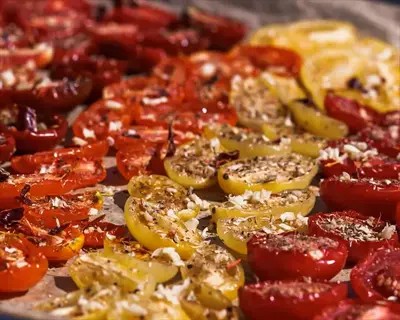
Yellow Pear Tomato Confit
- Preparation: Slow-roast 2 pints (680g) Yellow Pear tomatoes with ½ cup (120mL) olive oil, 8 garlic cloves, and thyme at 250°F (120°C) for 3 hours
- Flavor Transformation: Roasting concentrates Yellow Pear's citrus notes into sweet-tart bursts that complement cheeses and crusty bread
- Oil Usage: Reserve infused oil for salad dressings, storing tomatoes submerged in oil for up to 3 weeks refrigerated

Black Krim Bruschetta
- Preparation: Combine diced Black Krim tomatoes with 2 minced garlic cloves, ¼ cup (10g) chopped basil, 2 tbsp (30mL) balsamic glaze, and salt on grilled bread
- Color Retention: Black Krim's anthocyanin-rich skin maintains deep burgundy hue when mixed with acidic ingredients unlike paler tomato varieties
- Texture Tip: Drain excess liquid before topping to preserve bread crispness while concentrating smoky-sweet tomato flavor

Cherokee Green Stuffed Tomatoes
- Preparation: Hollow Cherokee Green tomatoes, fill with mixture of cooked quinoa, sautéed mushrooms, feta cheese, and bake at 375°F (190°C) for 25 minutes
- Structural Integrity: Thick walls of Cherokee Green maintain shape during baking while developing caramelized edges around savory filling
- Serving Suggestion: Garnish with parsley and serve warm as vegetarian main course alongside mixed green salad
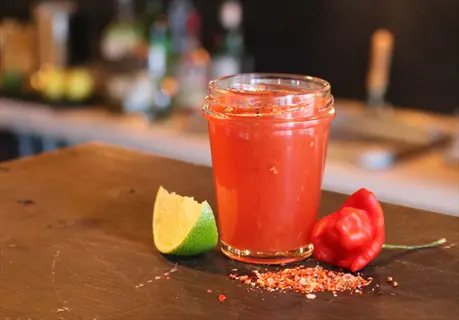
Paul Robeson Bloody Mary
- Preparation: Blend 4 Paul Robeson tomatoes with 2 oz (60mL) vodka, 1 tbsp horseradish, ½ tsp Worcestershire, celery salt, and ice until smooth
- Flavor Depth: Paul Robeson's smoky-sweet profile replaces standard tomato juice, eliminating need for added sweeteners in cocktail mixology
- Garnish: Rim glass with smoked salt and skewer olive plus pickled green bean alongside celery stalk
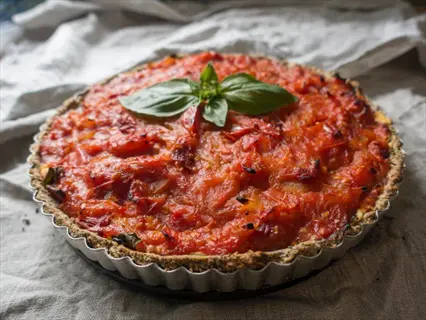
Rainbow Heirloom Tart
- Preparation: Arrange sliced Brandywine (pink), Green Zebra, and Cherokee Purple in concentric circles on puff pastry with herbed goat cheese
- Visual Contrast: Alternate tomato colors create striking presentation while baking intensifies flavor differences between varieties
- Baking Guidance: Bake at 400°F (200°C) for 30 minutes until crust golden and tomatoes slightly caramelized at edges
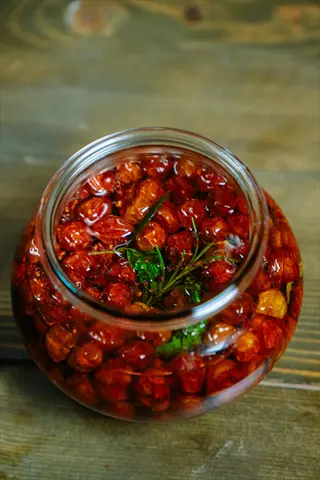
Sun-Dried Amish Paste
- Preparation: Halve Amish Paste tomatoes, toss with 1 tbsp (15mL) olive oil per pound, dehydrate at 135°F (57°C) for 10 hours until leathery
- Storage Method: Pack dried tomatoes in sterilized jars covered with olive oil, storing in cool dark place for 6+ months
- Usage Tip: Rehydrate in warm water 20 minutes for sauces or use oil-packed tomatoes directly in pasta dishes and salads
Flavor Profiles by Color
Color intensity can actually show flavor compounds in heirloom tomato varieties. Deep red and black tomatoes, such as Cherokee Purple, have concentrated levels of lycopene that lend a smoky, bold flavor. Pink Brandywines have a low acid sweetness with a more balanced concentration of carotenoids. Green Zebras get their zesty, tart flavor from the concentration of chlorophyll. White heirloom tomatoes, such as White Beauty, have virtually no acidity and a tropical sweetness.
There is a wide variety of textures within color classes. Juicy beefsteak types such as Black Krim would be contrasting paste tomatoes like Amish Paste, which are meaty and dense. Cherry types such as Yellow Pear remain crunchy and crisp when cooked. Indicators of ripeness are different too: green tomatoes show yellow shoulders when ripe whereas pink varieties get a velvet skin texture when ripe.
Identify proper ripeness through color-specific indicators. Purple tomatoes yield slightly near the stems when ripe, while orange types give a hint of citrus aroma, and striped types, such as Marvel Stripe, become shiny. Always ensure even color, since not-quite-ripe dark tomatoes can also have green shoulders.
Red and Black Tomatoes
- Flavor Profile: High acidity with bold, complex notes ranging from earthy to smoky, balanced by moderate sweetness levels around 4-6°Brix
- Texture: Juicy yet firm flesh in varieties like Black Krim, while Carbon has dense, meaty consistency ideal for slicing
- Best Uses: Perfect for fresh applications where vibrant acidity cuts through fats - caprese salads, bruschetta, or paired with rich cheeses
- Ripeness Signs: Deep burgundy to near-black coloration with slight give when gently pressed near stem end
- Varieties: Black Krim, Paul Robeson, Carbon, Cherokee Purple
Pink Tomatoes
- Flavor Profile: Low-acid with predominant sweetness (6-8°Brix) and subtle floral undertones, creating well-rounded balanced flavor in Brandywine types
- Texture: Tender yet substantial flesh that holds shape when sliced, with fewer seeds than darker varieties reducing moisture content
- Best Uses: Ideal for sandwiches and fresh eating where mildness complements rather than dominates other ingredients without added tartness
- Ripeness Signs: Uniform pink blush across skin with velvety feel; shoulders remain slightly firm while body yields to light pressure
- Varieties: Brandywine, Mortgage Lifter, Arkansas Traveler, German Pink
Orange and Yellow Tomatoes
- Flavor Profile: Mellow sweetness (7-9°Brix) with bright citrus or tropical fruit notes and minimal acidity, exemplified by Persimmon and Yellow Pear varieties
- Texture: Softer, almost creamy consistency in larger beefsteaks while cherry types like Blondkopfchen have firm, snappy bite
- Best Uses: Excellent in salads and salsas where vibrant color contrasts with greens, or roasted to intensify natural caramelized sweetness
- Ripeness Signs: Golden-orange hue without green shoulders; slight fragrance detectable at stem end when fully ripe
- Varieties: Persimmon, Kellogg's Breakfast, Yellow Pear, Azoychka
Green Tomatoes
- Flavor Profile: Tart and zesty with crisp acidity balanced by underlying sweetness, featuring unique spicy undertones in varieties like Green Zebra
- Texture: Exceptionally firm and crunchy even at peak ripeness, maintaining structural integrity in cooked dishes and salsas
- Best Uses: Standout in fried applications or fresh salsas where acidity brightens rich dishes; also excellent for chutneys and relishes
- Ripeness Signs: Yellowish cast on shoulders with slight softening; stripes remain vivid on varieties like Green Zebra when harvest-ready
- Varieties: Green Zebra, Cherokee Green, Aunt Ruby's German Green, Green Grape
White and Striped Tomatoes
- Flavor Profile: Exceptionally sweet (8-10°Brix) with fruity nuances resembling pineapple or melon, and near-absence of acidity in varieties like White Beauty
- Texture: Delicate, almost translucent flesh requiring careful handling; lower pectin content results in softer texture than colored varieties
- Best Uses: Best enjoyed fresh to appreciate subtle flavors, or in cold soups where sweetness balances savory ingredients without cooking
- Ripeness Signs: Ivory to pale yellow coloration with slight gold blush; skin appears almost glossy when ready for harvest
- Varieties: White Beauty, Marvel Stripe, Pineapple, Big Rainbow
Easiest Varieties for Beginners
Crack resistance is important for novice gardeners trying heirloom tomato varieties in uncertain weather. Arkansas Traveler tolerates a downpour without splitting! Green Zebra maintains its skin firmness even in fluctuating humidity. Crack resistance minimizes fruit loss and frustration for first-time growers.
Spacing is critical for healthy growth in containers or in the ground. In garden plots, indeterminate types (such as Amish Paste) would ideally be spaced 24 inches (60cm) apart. Use 5-gallon containers for the compact varieties. Indeterminate varieties require 36 inches (90cm) of space to ensure optimal airflow.
The expectations for how much fruit (potential yield) I can expect vary greatly from tomato to tomato. Determinate Amish Paste bushes produce, in concentrated harvests, around 10-15 lbs (4.5-6.8 kg). Indeterminate Yellow Pear vines will have a continuous yield of 1000+ fruit. Select based on how much food preservation you plan to do.
Take an approach of disease tolerance instead of absolute resistance for realistic outcomes. Green Zebra performs better than most with Fusarium wilt. Arkansas Traveler does well with fungi associated with hot and humid conditions. No variety is fully immune, but with some smart choices, the problems can be reduced substantially.
Arkansas Traveler
- Disease Resistance: High tolerance to fungal diseases and heat stress, thriving in humid climates where other varieties struggle
- Growth Habit: Indeterminate vines reaching 5-6 ft (1.5-1.8m) requiring sturdy stakes or cages for optimal support
- Maturity: 75-85 days producing 6-8 oz (170-227g) deep pink fruits with balanced sweet-tart flavor
- Special Care: Minimal pruning needed; tolerates minor drought once established but benefits from consistent moisture
- Yield: 15-20 lbs (6.8-9kg) per plant when properly supported throughout growing season
Amish Paste
- Disease Resistance: Moderate resistance to verticillium wilt and fusarium; less prone to blossom end rot than beefsteaks
- Growth Habit: Semi-determinate bushes growing 4-5 ft (1.2-1.5m) suitable for smaller gardens or large containers
- Maturity: 80-85 days yielding 8-12 oz (227-340g) meaty red fruits with few seeds ideal for sauces
- Special Care: Requires minimal staking; benefits from calcium-rich soil to prevent fruit cracking during heavy rains
- Yield: 10-15 lbs (4.5-6.8kg) per plant concentrated in mid-season harvest window
Yellow Pear
- Disease Resistance: Strong resistance to tobacco mosaic virus; shows good tolerance to common leaf spot diseases
- Growth Habit: Vigorous indeterminate vines growing 6-8 ft (1.8-2.4m) needing trellises for abundant cherry-sized fruits
- Maturity: 70-75 days producing continuous clusters of 1-2 inch (2.5-5cm) yellow pear-shaped tomatoes
- Special Care: Self-pruning habit reduces maintenance; plant 24-36 inches (60-90cm) apart for optimal airflow
- Yield: 1000+ fruits per plant throughout season; excellent for snacking and salads
Cherokee Purple
- Disease Resistance: Moderate tolerance to early blight; performs better in dry climates than high-humidity regions
- Growth Habit: Indeterminate vines reaching 5-7 ft (1.5-2.1m) needing heavy-duty support for large fruits
- Maturity: 80-90 days yielding 10-16 oz (283-454g) dusky purple beefsteaks with rich, smoky-sweet flavor
- Special Care: Requires consistent watering to prevent blossom end rot; mulch heavily to maintain soil moisture
- Yield: 15-20 lbs (6.8-9kg) per plant when given adequate space and nutrients
Green Zebra
- Disease Resistance: Excellent resistance to fusarium wilt and leaf mold; maintains vigor in cooler climates
- Growth Habit: Indeterminate vines growing 6-7 ft (1.8-2.1m) producing abundant small-medium striped fruits
- Maturity: 75-80 days yielding 3-4 oz (85-113g) green-yellow tomatoes with distinctive tart flavor
- Special Care: Tolerates partial shade; requires less heat than red varieties to develop full flavor profile
- Yield: 8-12 lbs (3.6-5.4kg) per plant with continuous harvest from midsummer to first frost
Top 10 Heirloom Tomato Varieties
Flavor complexity ranks these heirloom tomato varieties, with Brandywine being the sweetest, ranging from 6 to 8°Brix. The Ohio lineage accentuates floral flavors with low acidity. Following is Cherokee Purple with smoky depth at 5-7°Brix from Tennessee. Paul Robeson offers wine quality complex depth with origins in Russia at 6°Brix.
The top varieties have an astonishingly diverse array of textures. The meaty Amish Paste from Pennsylvania pairs well with more water-laden textures, complementing the juicy Brandywine tomato. Cherokee Purple is somewhere in between. Green Zebra's firm and crisp quality stands in stark contrast to the snappy bites of a Yellow Pear cherry. Each of these textures offers different culinary applications.
Geographical origins tell adaptation stories. Arkansas Traveler developed humidity tolerance while growing in the Southeast. Green Zebra's origin in Washington State explains its hardiness in cool climates. Germain Pink types like Aunt Ruby's have European stories in their lineage. These histories influence the specific performance of each tomato.
Fill out the final ten with diversity in mind. Cherokee Green provides tangy brightness from Tennessee. Yellow Pear offers sweetness reminiscent of colonial gardens. Black Krim tomatoes add smoky flavors reminiscent of those from Crimea. All offer unique regional heritage through flavor and growth habits.
Brandywine (Pink)
- Flavor: Rich, complex sweetness (6-8°Brix) with low acidity and subtle floral notes - considered the gold standard for tomato flavor
- Appearance: Large 1-2 lb (450-900g) pink beefsteaks with distinctive ribbed shoulders and thin skin
- Growth: Indeterminate vines reaching 6-9 ft (1.8-2.7m); requires sturdy support; matures in 80-100 days
- Best Uses: Ideal for fresh eating in sandwiches and salads where delicate texture shines
- Special Care: Susceptible to cracking; maintain consistent moisture and provide afternoon shade in hot climates
- Heritage: Originated in 1880s Ohio; passed through generations of Amish gardeners
Cherokee Purple
- Flavor: Smoky-sweet with earthy undertones and balanced acidity (5-7°Brix); deep umami richness
- Appearance: Dusky rose-purple beefsteaks weighing 10-16 oz (283-454g) with green shoulders when unripe
- Growth: Indeterminate vines to 7 ft (2.1m); moderate disease resistance; matures in 80-90 days
- Best Uses: Excellent sliced on burgers or in caprese salads where color contrasts with mozzarella
- Special Care: Prone to blossom end rot; add calcium to soil and mulch heavily to retain moisture
- Heritage: Believed inherited from Cherokee Native Americans; popularized in 1990s Tennessee
Black Krim
- Flavor: Bold, smoky-sweet with high acidity and wine-like complexity; popular in tomato tastings
- Appearance: Deep mahogany fruits 8-12 oz (227-340g) with green shoulders; slightly flattened shape
- Growth: Indeterminate vines to 6 ft (1.8m); heat-tolerant; matures in 70-80 days
- Best Uses: Perfect for grilling or roasting where smoky notes intensify; also excellent fresh
- Special Care: Crack-resistant skin makes it forgiving for inconsistent waterers
- Heritage: Originated in Crimea; brought to US in 1990s after Soviet seed exchanges
Green Zebra
- Flavor: Tart, zesty with bright acidity and crisp apple-like finish; maintains tanginess when cooked
- Appearance: Small 2-4 oz (57-113g) fruits with vivid green-yellow stripes; golf-ball size
- Growth: Indeterminate vines to 7 ft (2.1m); disease-resistant; matures in 75-80 days
- Best Uses: Standout in salsas and fried green tomato dishes; adds color contrast in salads
- Special Care: Tolerates cooler temperatures better than most varieties; requires less heat
- Heritage: Developed in 1983 by Tom Wagner; one of few modern heirlooms
Amish Paste
- Flavor: Balanced sweet-tart profile with dense, meaty flesh; few seeds and low moisture content
- Appearance: 8-12 oz (227-340g) oblong red fruits; thicker walls than standard roma types
- Growth: Semi-determinate bushes to 5 ft (1.5m); compact habit; matures in 80-85 days
- Best Uses: Superior for sauces and canning due to high solids content; minimal reduction needed
- Special Care: Minimal staking required; resistant to blossom end rot
- Heritage: Amish heirloom from Pennsylvania; traced to 1870s Mennonite communities
Aunt Ruby's German Green
- Flavor: Sweet, low-acid with spicy undertones; buttery texture and complex flavor development
- Appearance: Large 1-1.5 lb (450-680g) yellow-green beefsteaks; slight pink blush when ripe
- Growth: Indeterminate vines to 8 ft (2.4m); vigorous; matures in 80-90 days
- Best Uses: Exceptional sliced fresh with salt; maintains integrity when baked or grilled
- Special Care: Needs extra nitrogen; susceptible to sunscald - preserve leaf canopy
- Heritage: Brought from Germany by Ruby Arnold in 1950s Tennessee
Paul Robeson
- Flavor: Smoky-sweet with rich, wine-like depth; often described as tobacco and caramel notes
- Appearance: 10-14 oz (283-397g) brick-red to dark brown beefsteaks; smooth, thin skin
- Growth: Indeterminate vines to 6 ft (1.8m); cold-tolerant; matures in 75-85 days
- Best Uses: Excellent for fresh eating and sandwiches; flavor intensifies when oven-dried
- Special Care: Benefits from foliar feeding; prone to catfacing - remove deformed early fruits
- Heritage: Russian heirloom named after African-American singer; introduced 1990s
Yellow Pear
- Flavor: Mild, sweet with citrus undertones; low acidity makes it popular with children
- Appearance: 1-2 inch (2.5-5cm) pear-shaped yellow cherries; grows in abundant clusters
- Growth: Indeterminate vines to 8 ft (2.4m); prolific; matures in 70-75 days
- Best Uses: Perfect for salads, snacking, and garnishes; holds shape when pickled
- Special Care: Self-pruning; requires minimal maintenance; plant 36 inches (90cm) apart
- Heritage: Dates to 18th century Europe; popularized in colonial American gardens
Cherokee Green
- Flavor: Tangy-sweet with bright acidity; complex flavor profile similar to Cherokee Purple
- Appearance: Medium 6-10 oz (170-283g) yellow-green fruits; occasional pink blush
- Growth: Indeterminate vines to 6 ft (1.8m); disease-resistant; matures in 75-80 days
- Best Uses: Excellent in salsas and salads where color provides visual contrast
- Special Care: Tolerates partial shade; requires consistent watering to prevent cracking
- Heritage: Sport of Cherokee Purple; stabilized by Craig LeHoullier in 1990s
Arkansas Traveler
- Flavor: Balanced sweet-tart with classic tomato flavor; crisp texture when fresh
- Appearance: 6-8 oz (170-227g) deep pink globes; crack-resistant smooth skin
- Growth: Indeterminate vines to 6 ft (1.8m); heat-tolerant; matures in 75-85 days
- Best Uses: Versatile for fresh eating, canning, and sauces; holds shape when cooked
- Special Care: Highly disease-resistant; minimal pruning needed; ideal for humid regions
- Heritage: Developed in 1870s Arkansas; bred for Southern heat tolerance
5 Common Myths
Heirloom tomatoes do not have the same level of disease resistance as hybrids.
However, there are many heirloom varieties that express natural disease resistance that was inherently bred over generations of growing. Arkansas Traveler has a high tolerance to fungi and heat stress, and Green Zebra has extraordinary resistance to fusarium wilt. These attributes evolved through natural selection to thrive in specific climates. Under proper growing conditions, a number of heirlooms demonstrate equal ease of growing as hybrids.
Hybrid tomato varieties consistently outyield heirloom types
While some hybrids are bred for high initial yields, indeterminate heirlooms like Cherokee Purple and Brandywine produce continuously throughout the season, often matching or exceeding hybrid yields over time. Yellow Pear cherry tomatoes can yield 1000+ fruits per plant, outperforming many hybrids. Properly supported heirlooms in optimal conditions frequently achieve 15-20 lbs (6.8-9kg) per vine.
Every heirloom tomato plant is a type of old variety, pre-1900
The 'heirloom' label simply indicates that the open-pollinated variety has been cultivated and saved for 50 years or more, not that the genetics are ancient. Green Zebra was developed in 1983, and is now something we can call an heirloom. Cherokee Green stabilized in the 1990s. However, due to the 50 year standard, they earn their heirloom status through seed saving techniques.
Saving heirloom tomato seeds takes some know-how
Seed saving requires a pretty simple fermentation process: scoop seeds into jars with some water, let them ferment for 3-5 days, rinse, and dry. An easy process that requires no special equipment and provides you with seeds that are freed from germination inhibitors. With some simple preparation, home gardeners can save seeds and have 90% or more viability when stored in a dark, cool space for 5-10 years.
Heirloom tomatoes don't work in container gardens
Many heirlooms can adapt nicely to containers when given appropriate care. Compact varieties like Yellow Pear and dwarf varieties like Tiny Tim will do fine in 5-gallon pots with well-drained soil. The semi-determinate Amish Paste will yield 8-12 oz (227-340g) fruit when grown in a large container, with enough moisture and support.
Conclusion
Saving heirloom tomato varieties is vital in conserving genetic diversity crucial to our future food security. Each rare variety possesses climate adaptations that were lost in commercial hybrids. By growing these tomatoes, you are joining a global seed-saving movement in preserving agricultural food culture.
Homegrown heirlooms offer flavors that supermarkets can never replicate. A sun-warmed Brandywine's complex sweetness or a Green Zebra's zippy tang can create an extraordinary meal. This taste difference is due to your attention to growing them, not factory growing.
Continue your preservation traditions by using simple seed-saving methods. Harlyn and I try fermenting seeds in jars and then drying and preserving them, some for several years. Then we label envelopes and put them in a cool, dark place. Your hard work preserves the unique flavors for future gardeners to enjoy.
Growing these tomatoes is still attainable to everyone. Begin with dependable varieties such as Arkansas Traveler or Yellow Pear. Disease resistance and container suitability are essential for success. Heirloom gardening starts with one seed.
External Sources
Frequently Asked Questions
What defines a tomato as an heirloom variety?
Heirloom tomatoes are open-pollinated varieties preserved for at least 50 years through seed-saving traditions. Unlike hybrids, they maintain genetic stability across generations and showcase unique traits like distinctive flavors, colors, and textures developed through natural adaptation.
Which heirloom tomatoes offer the best flavor profiles?
Top varieties for exceptional taste include:
- Brandywine (rich, low-acid sweetness)
- Cherokee Purple (smoky-sweet umami depth)
- Green Zebra (zesty tartness)
- Paul Robeson (complex tobacco-caramel notes)
- Yellow Pear (mild citrus undertones)
Are heirloom tomatoes suitable for container gardening?
Many compact varieties thrive in containers with proper care:
- Yellow Pear cherries flourish in 5-gallon pots
- Semi-determinate Amish Paste needs minimal staking
- Dwarf varieties like Tiny Tim suit small spaces
- Ensure well-draining soil and consistent watering
- Provide at least 6 hours of daily sunlight
How do you preserve heirloom tomato seeds properly?
Effective seed saving requires fermentation: place seeds in water for 3-5 days until gel dissolves, rinse thoroughly, then dry completely. Store in airtight containers in cool, dark conditions to maintain 90%+ viability for 5-10 years.
What are beginner-friendly heirloom tomato varieties?
Recommended starter varieties include:
- Arkansas Traveler (disease-resistant for humid climates)
- Green Zebra (cold-tolerant with crack resistance)
- Amish Paste (compact growth for small spaces)
- Yellow Pear (prolific producer with minimal care)
- Cherokee Purple (forgives watering inconsistencies)
Why do heirloom tomatoes have different colors?
Color variations signal unique phytochemical compositions:
- Red/black: High lycopene for bold flavor
- Pink: Low acid with floral sweetness
- Green: Chlorophyll creates zesty tartness
- Yellow/Orange: Carotenoids yield mellow citrus notes
- Striped: Anthocyanin patterns indicate complex flavors
Do heirloom tomatoes take longer to mature than hybrids?
Most mature in 70-90 days, comparable to hybrids. Quick varieties like Yellow Pear ripen in 70 days, while larger beefsteaks like Brandywine may require 100 days. Proper soil warmth and sunlight accelerate maturation regardless of type.
How can you identify quality heirloom tomato plants?
Select vigorous seedlings showing:
- Deep green leaves without spots or yellowing
- Thick stems able to support fruit weight
- Visible root development but not pot-bound
- No signs of disease or pest damage
- True-to-type leaf structure matching variety
What nutritional benefits do heirloom tomatoes provide?
They offer concentrated phytonutrients:
- Anthocyanins in purple types support heart health
- Higher lycopene in red varieties than hybrids
- Green tomatoes provide chlorophyll antioxidants
- Yellow/orange contain beta-carotene for immunity
- Diverse micronutrients from unique soil adaptations
Why might heirloom tomatoes produce smaller yields?
Yield differences stem from natural growth patterns rather than deficiency. Many heirlooms like Cherokee Purple focus energy on flavor complexity over quantity. Proper support, consistent watering, and soil nutrition optimize their natural production potential.
